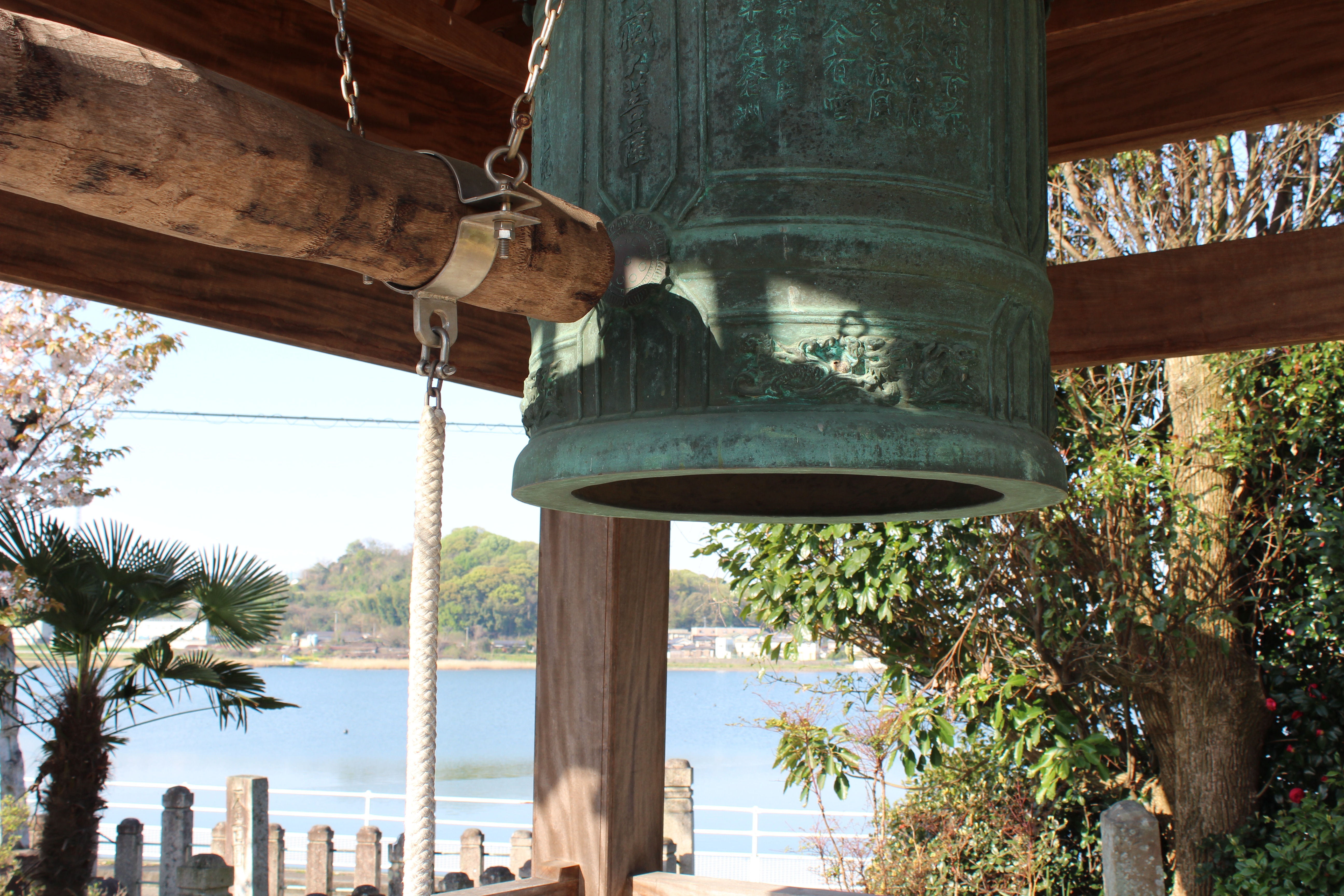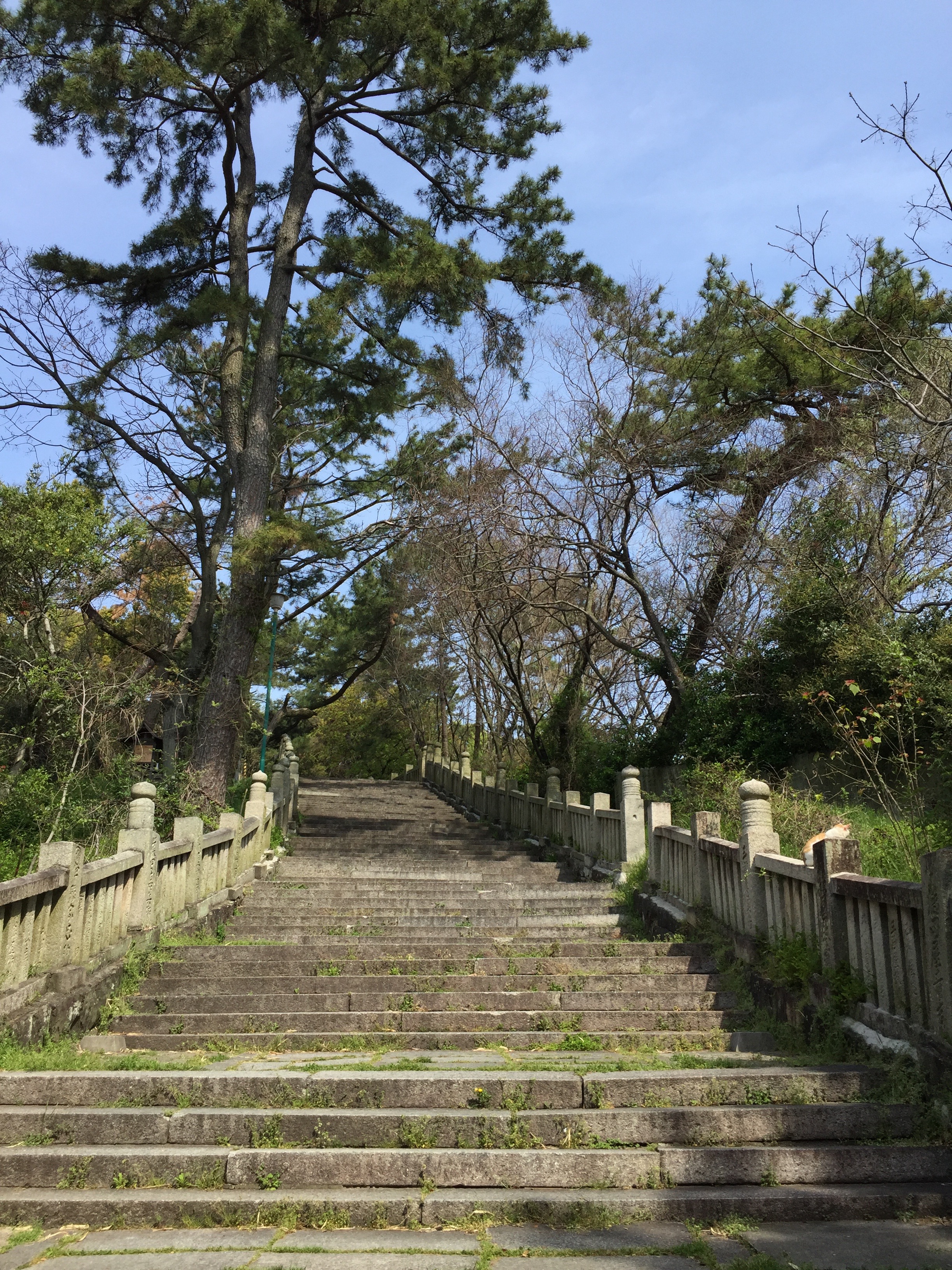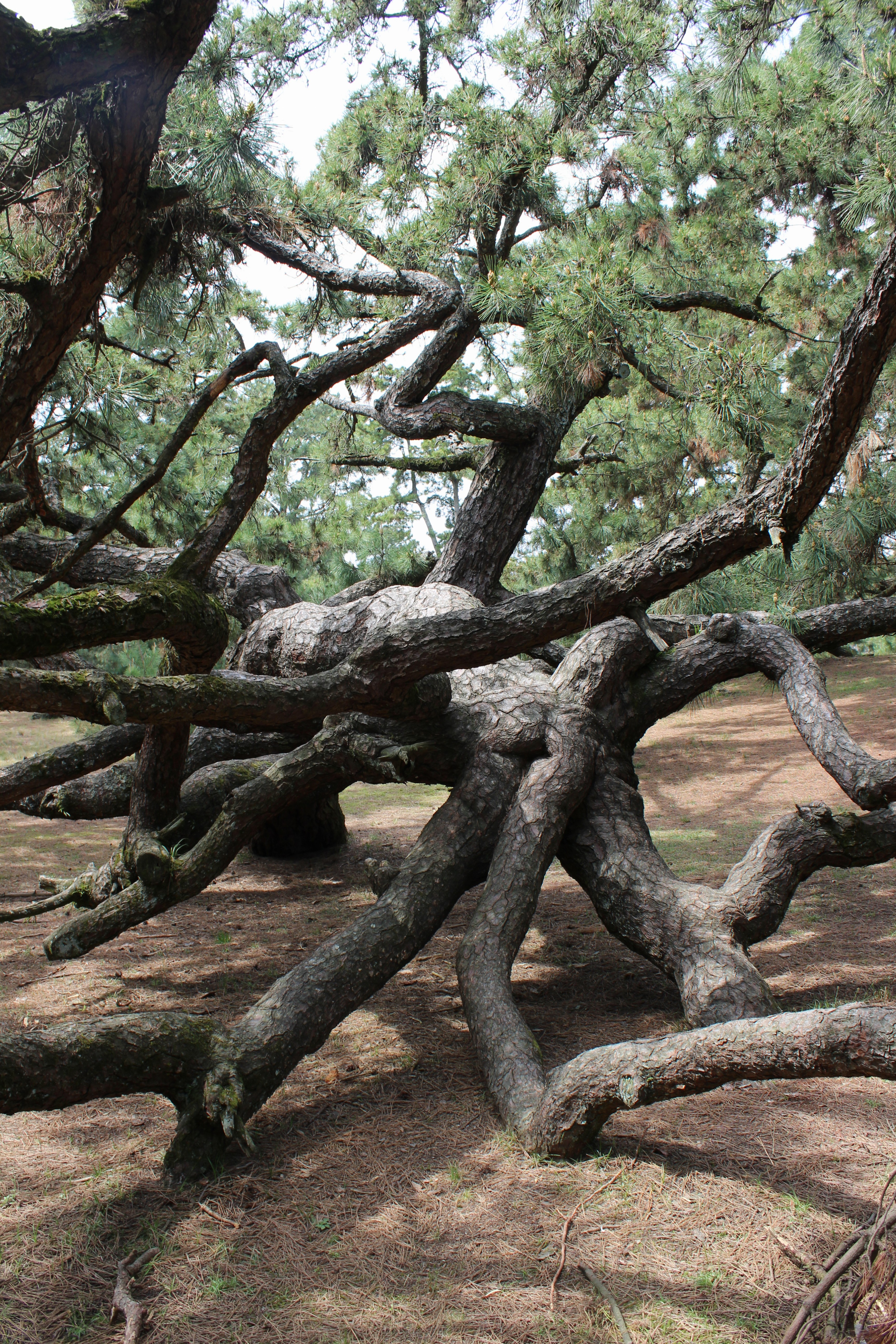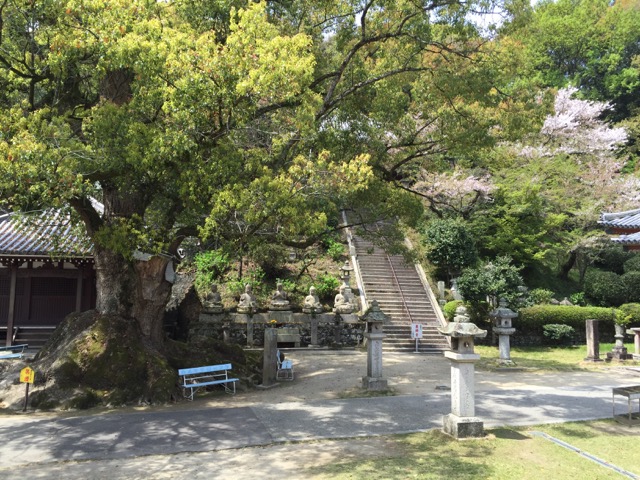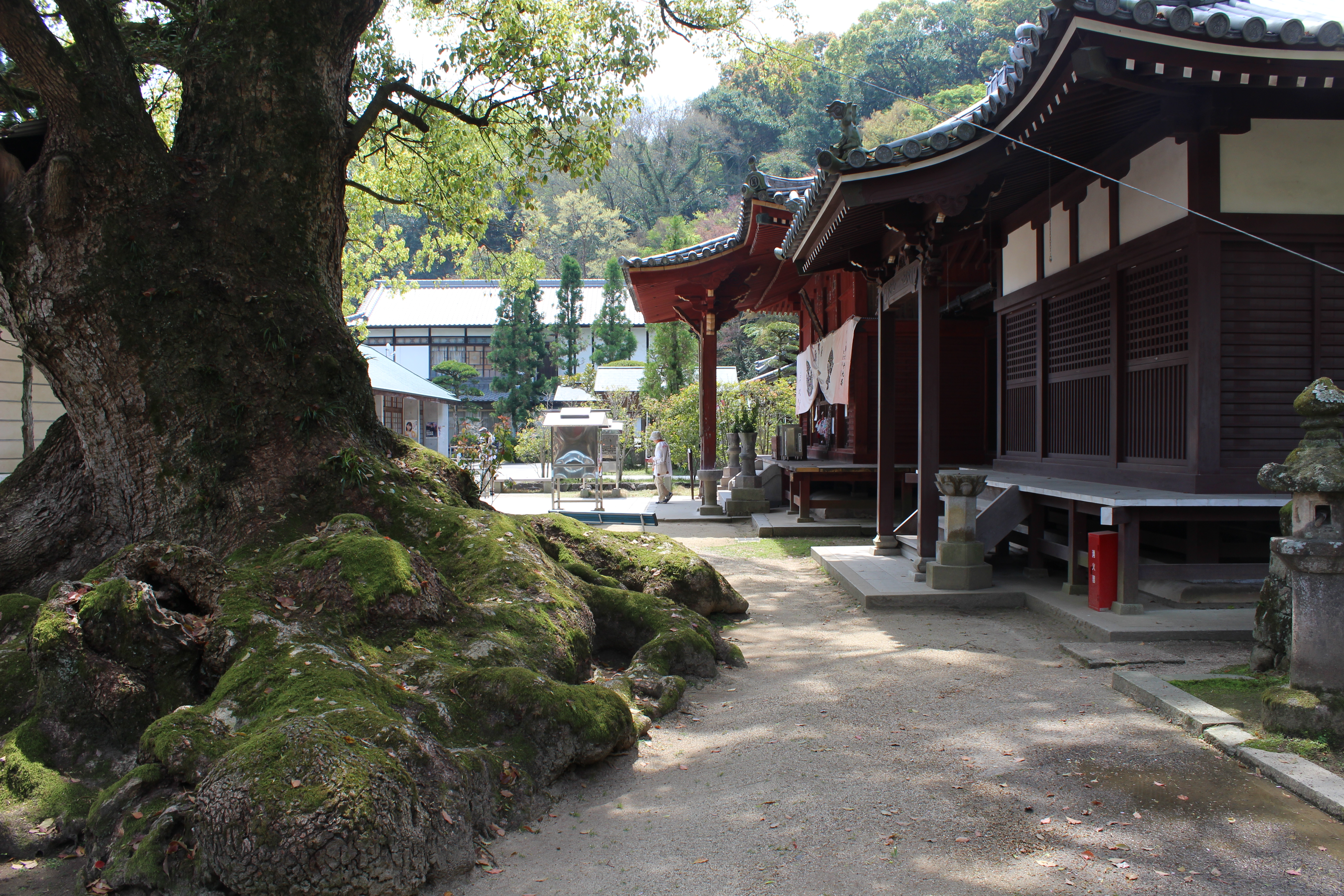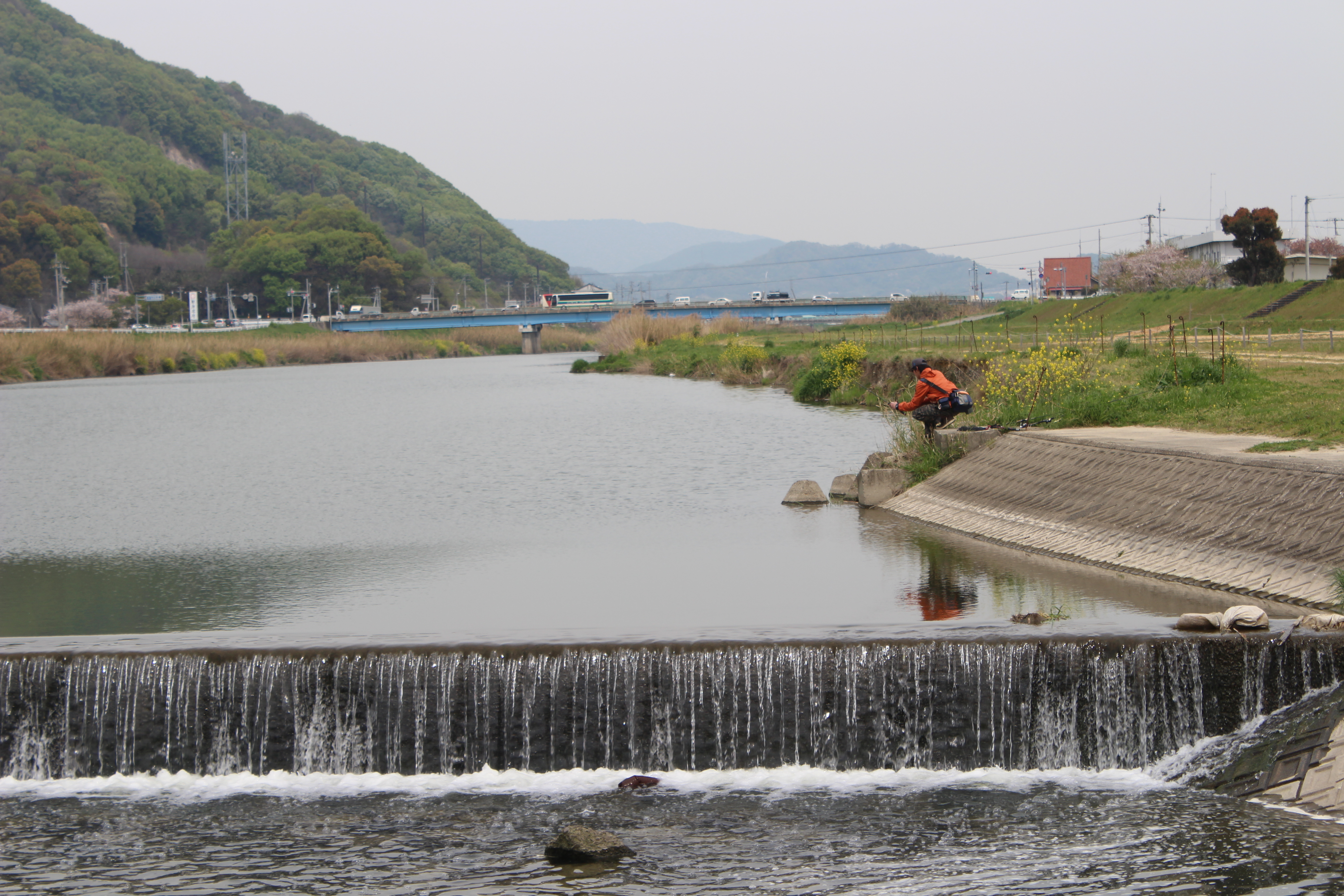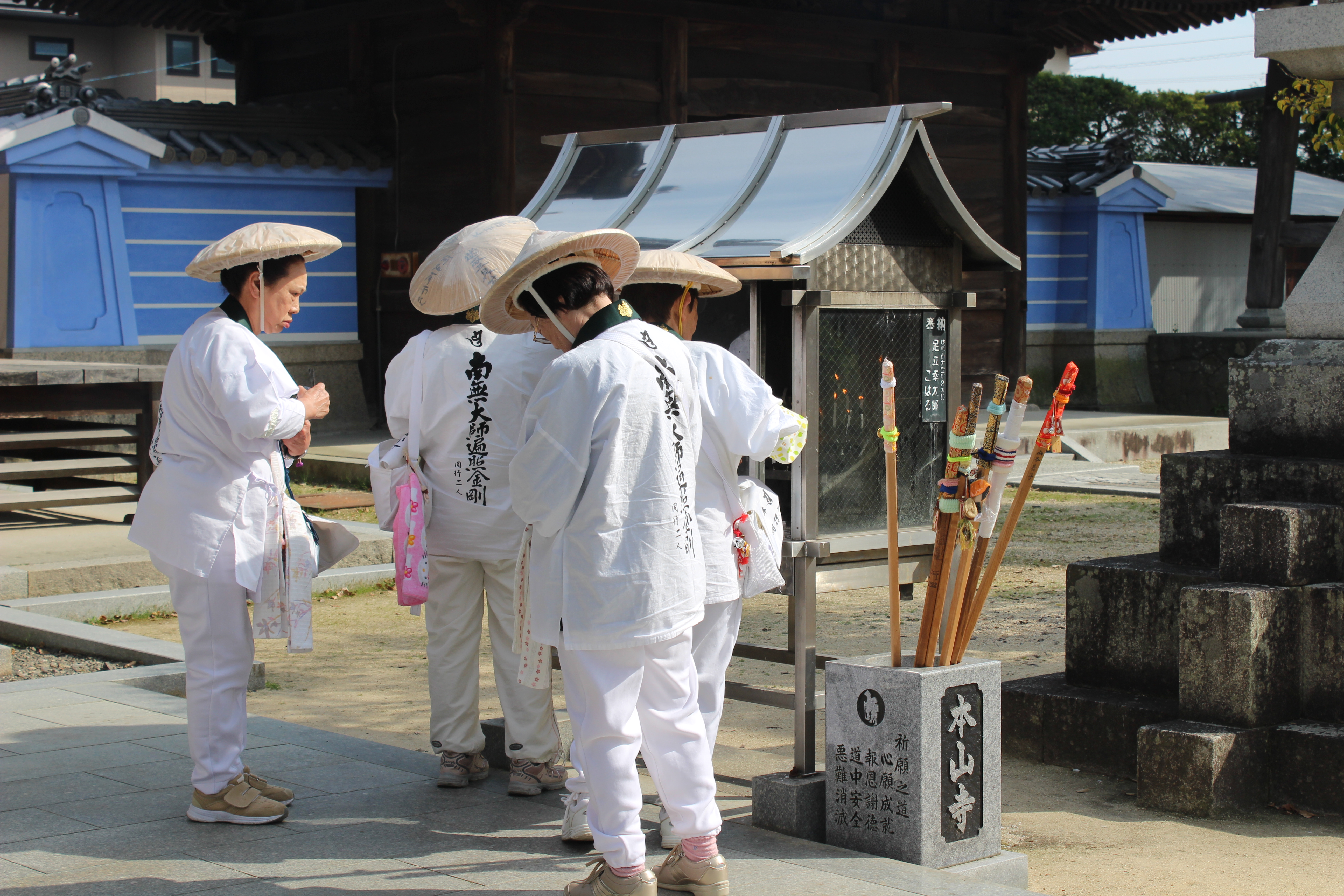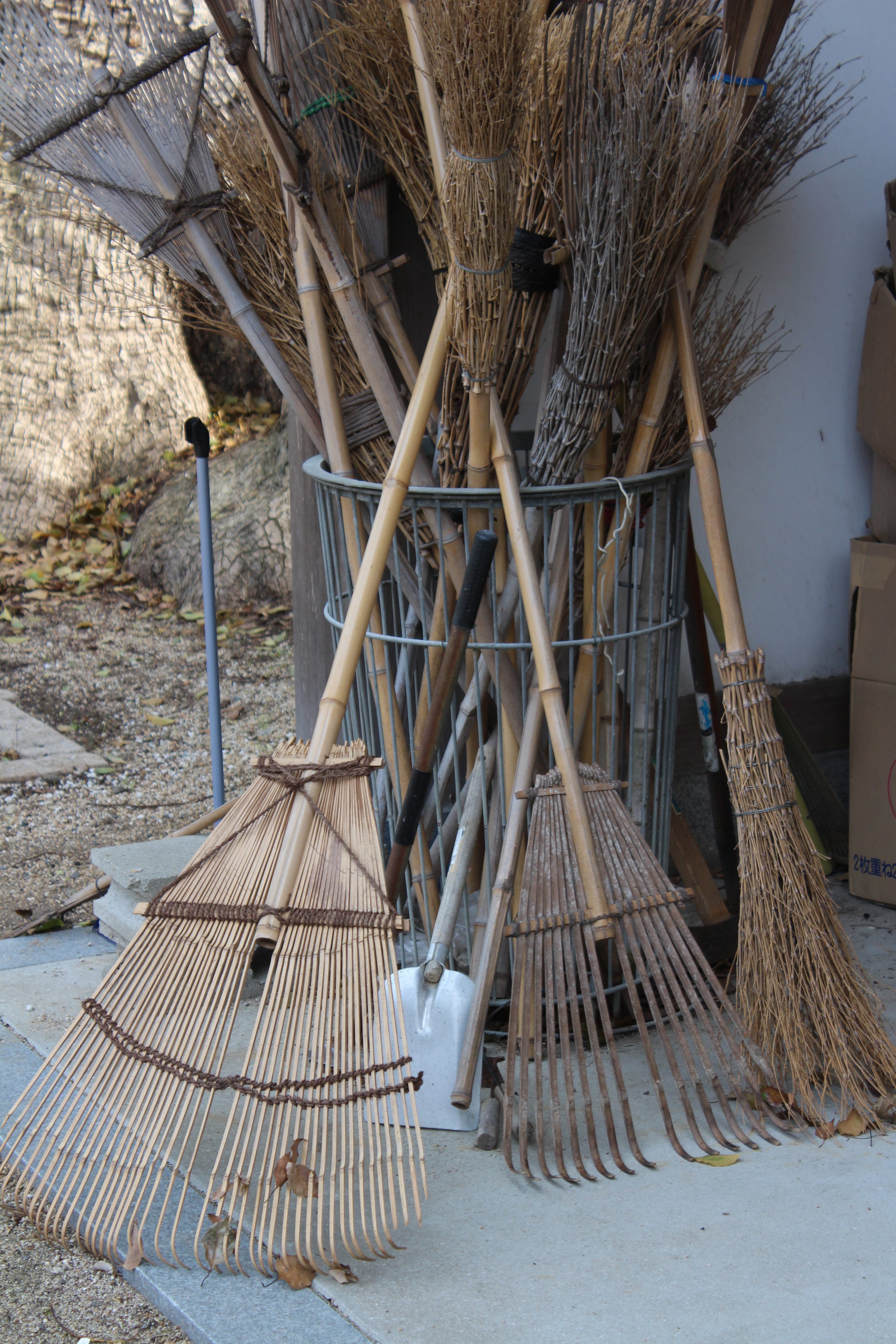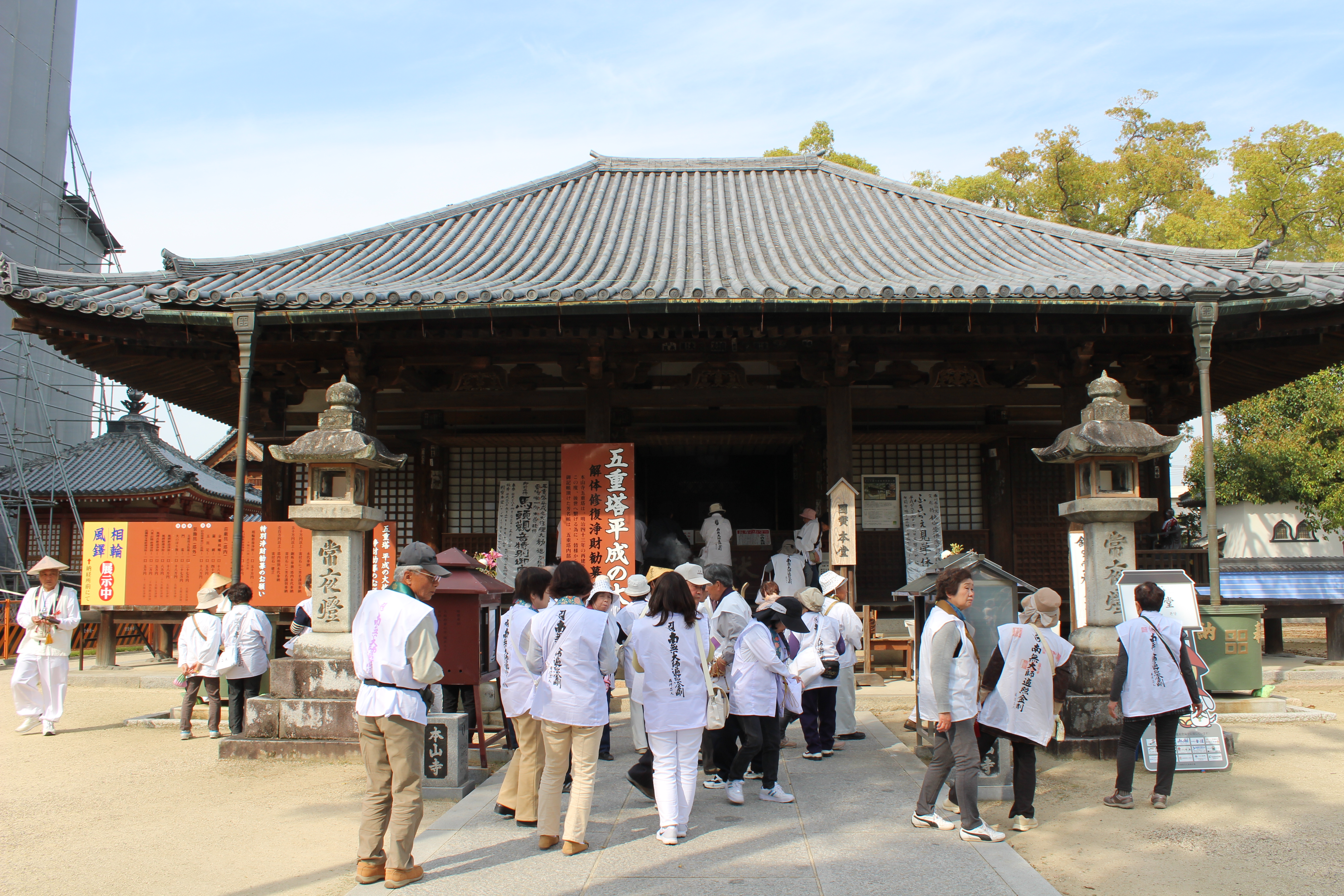Kotohiki Park and the coin shaped sand drawing (temples 68/69)
It was a beautiful day when I walked to Jinnein and Kannonji (temples 68,69).
I passed fields with wheat, gardens with colorful flowers and a bell tower in a
cemetery overlooking a lake.
By crossing the Saita River, I passed the Torii (gate) of Kotohiki Jinja located on the
“Zither Strumming Hill”. According to a legend, Kotohikiyama got the name from an
event that happened 1 300 years ago. When a high-ranking priest meditated on the
hill, Hachiman Bosatsu came down from the sky and a boat filled with beautiful
zither music arrived close to the shore. The priest, with the help of villagers, pulled
the boat out of the ocean and enshrined it on the hill together with the zither. In
former times, Buddhism and Shintōism was mixed.
When I arrived at the shrine, beautiful zither music filled the air. For hundreds of
years, people around Japan believed that this shrine is offering protection to
seafarers.
Torii to the Kotohiki Jinja
Stairways up to the shrine
I was lucky this day that I met an English speaking Japanese who could show me around.
My nice guide showed me a stone stele donated by his ancestors.
17th century – style coin made out of sand (Kan-ei-tsūhō). The round looking sand
coin is actually an oval of 122m from West to East and 90m from North to South.
This oval shape is done intentionally, so it will look like a circle from the hill above.
Twice a year volunteers reshape it.
Gorgeous old pine trees surround the sand coin.
I love ancient trees. Most of the time I could find them in the areas of temples and shrines.
Hundreds of years old camphor tree in Kannonji (temple 69). Jinnein (temple 68) is
only 150 feet away.
The path to Motoyamaji (temple 70) goes along the Saita River.
Saita River
A row of carp flags (koinobori) fluttering in the wind anticipates the national holiday
of boys’ day on May 5. On this day (tango-no-sekku, 5/5), the nation celebrates the
happiness of children. The celebration goes back to the ancient Japanese Iris festival
at the court. Originally, mugwort was hung to dispel evil spirits.
.
Ohenros are lighting candles before going to the main hall of Motoyamaji. The
temple grounds are surrounded by an unusual blue wall (See in background)
Brooms used to sweep the temple grounds
In Motoyamaji (temple 70), a 5-story pagoda was under construction (part of it you
can see to the left of the photo). The main Hall is designated as a National Treasure.
After leaving Motoyamaji, I passed a Lawson grocery store. Lawson and Seven-
Eleven, both convenient stores, were stores I could rely on. Typical for these stores
are the huge parking lots. They were all along the way and I could buy there
everything I needed. Most of the time, I bought nuts, Onigiri (rice balls), bananas
and water for lunch.
.
.

